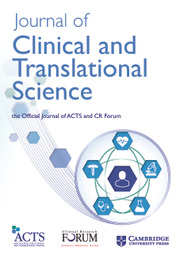No CrossRef data available.
Article contents
425 Elucidating structure–function relationships driving immune aging in lymph nodes
Published online by Cambridge University Press: 11 April 2025
Abstract
Objectives/Goals: The aging population faces unique health issues, many of which are exacerbated by aging-associated immune function decline. However, the driving mechanisms behind this decline are poorly understood. We use a mouse model to study the relationship between extracellular matrix (ECM) stiffness and cell mobility within the lymph node (LN) as one potential driving mechanism. Methods/Study Population: We will collect LN from young (6 weeks old) mice and acquire LN from aged (11 month old) mice from a collaborator. We will section LN for ex vivo analysis, including quantification and localization of collagen I using immunofluorescent staining, analysis of microrheological properties using multiparticle tracking (MPT) with PEGylated fluorescent nanoparticles, and migration assays to track the movement of B and T cells. Results/Anticipated Results: We hypothesize a positive correlation between collagen deposits and stiffness within murine LNs due to known mechanisms underlying age-related fibrosis. We also hypothesize that areas of increased stiffness (as revealed by MPT) will exhibit decreased cell migration due to physical hindrance to B and T cell mobilization. Furthermore, we hypothesize that aged murine LN will exhibit a significant increase in stiffness and resultant decreased cell mobility when compared to young murine LN, particularly in areas with increased collagen localization. Discussion/Significance of Impact: These studies will elucidate structure–function relationships driving age-associated LN fibrosis and stiffness, and the resultant impedance to cell migration, thus clarifying some of the potential driving mechanisms behind immune aging and providing data capable of informing the development of relevant models and interventions.
Information
- Type
- Other
- Information
- Creative Commons
- This is an Open Access article, distributed under the terms of the Creative Commons Attribution-NonCommercial-NoDerivatives licence (https://creativecommons.org/licenses/by-nc-nd/4.0/), which permits non-commercial re-use, distribution, and reproduction in any medium, provided the original work is unaltered and is properly cited. The written permission of Cambridge University Press must be obtained for commercial re-use or in order to create a derivative work.
- Copyright
- © The Author(s), 2025. The Association for Clinical and Translational Science

